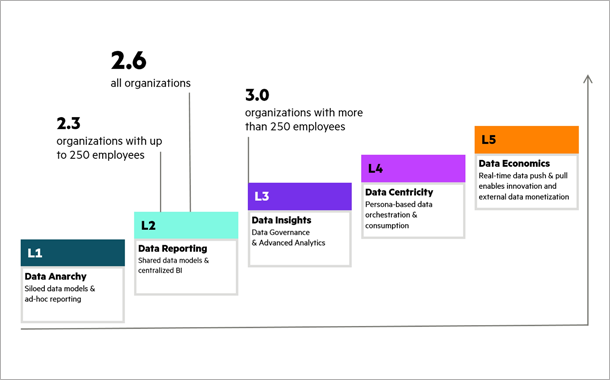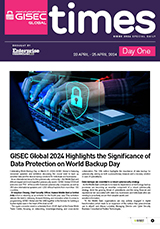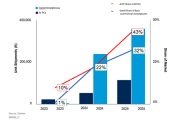While governments around the world have identified data as a strategic resource to drive economic and social progress, Hewlett Packard Enterprise unveiled global survey results showing that a lack of data maturity hinders both the private and public sector from achieving key outcomes such as growing sales or advancing environmental sustainability.
Conducted by YouGov on behalf of HPE, the survey of more than 8,600 decision makers from across industries and the public sector in 19 countries reveals that the average organization’s data maturity level – or ability to create value from data – is 2.6 on a five-point scale, with only three percent reaching the highest maturity level.
“There is broad consensus that the world’s data holds an enormous potential to advance the way we live and work – however, unlocking this potential requires a shift in organizations’ digital transformation strategies,” said Antonio Neri, president and CEO of HPE. “We must move from ‘cloud first’ to ‘data first’ as the North Star of digital transformation – meaning that organizations align their strategic, organizational and technological choices with the overarching goal of leveraging data as a strategic asset.”
Lack of data capabilities impedes key outcomes
The survey is based on a maturity model developed by HPE that assesses an organization’s ability to create value from data based on strategic, organizational and technological criteria. The lowest maturity level (1) is called “data anarchy”; on this level, data pools are isolated from one another, and are not systematically analyzed to create insights or outcomes. The highest level (5) is called “data economics”; at this level, an organization strategically leverages data to drive outcomes, based on a unified access to both internal and external data sources which are analyzed with advanced analytics and artificial intelligence.
Survey results reveal that 14 percent of organizations are on maturity level 1 (“data anarchy”), 29 percent on level 2 (“data reporting”), 37 percent on level 3 (“data insights”), 17 percent on level 4 (“data centricity”), and just 3 percent are on level 5 (“data economics”).
The lack of data capabilities, in turn, limits organizations’ ability to create key outcomes such as growing sales (30%), innovating (28%), advancing customer experience (24%), improving environmental sustainability (21%) and increasing internal efficiency (21%).
Organizations must close strategic, organizational and technological gaps
The survey provides a detailed view of the strategic, organizational and technological gaps that organizations must close to capitalize on data along their entire value chain. Sample findings include:
- Only 13 percent of respondents say that their organization’s data strategy is a key part of their corporate strategy.
- Almost half of respondents say their organization allocates either no budget for data initiatives (28%) or only occasionally funds data initiatives via the IT budget (20%).
- Only 28 percent of respondents confirmed they have a strategic focus on providing data-driven products or services.
- And almost half of respondents say their organizations do not use methodologies like machine learning or deep learning but rely on spreadsheets (29%) or business intelligence and canned reporting (18%) for data analysis.
Creating value from data also requires aggregating data or data insights from different applications, locations or external data spaces. For example, a manufacturer’s sensor telemetry from sold products can help the R&D department to better align the next product generation with customer needs, and sharing insights from patient data among hospitals can advance medical diagnosis.
Organizations want control across clouds and edges
A characteristic of a low data maturity level is that there is no overarching data and analytics architecture, but data is isolated in individual applications or locations. This is the case for 34 percent of respondents. On the other hand, only 19 percent have implemented a central data hub or fabric that provides unified access to real-time data across their organization, and another 8 percent say this data hub also includes external data sources.
Given that data sources are increasingly distributed across clouds and edges, the majority of respondents (62%) say that it’s strategically important to have a high degree of control over their data and the means to create value from data. More than half of respondents (53%) are concerned that data monopolies have too much control over their capability to create value from data, and 39 percent are re-evaluating their cloud strategy due to increasing cloud costs (42%), concerns over data security (37%), the need for a more flexible data architecture (37%) and the lack of control over their data (32%).
Research Methodology
The data is based on an online survey conducted by YouGov between October 26 and November 18, 2022, among C-level executives, business unit and function leaders, department and division leaders, first-line managers and team leaders across industries and the public sector in Australia (N = 500), Brazil (N = 500), Canada (N = 500), France (N = 500), Germany (N = 500), India (N = 500), Italy (N = 500), Japan (N = 400), Mexico (N = 500), Netherlands (N = 500), Poland (N = 500), Singapore (N = 500), Spain (N = 200), South Korea (N = 400), Sweden (N = 200), Switzerland (N = 200), Türkiye (N = 200), UK (N = 500), US (N = 1000).
For example, European Commission’s data strategy calls data the “lifeblood of economic development“, the UK government in its National Data Strategy calls data the “the great opportunity of our time”, the U.S. Federal Government has laid out a strategy and action plan to “leverage data as a strategic asset”, and the Communist Party of China has declared data to be a factor of production.

































































